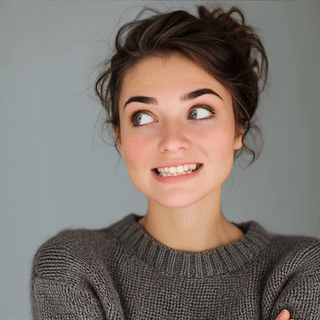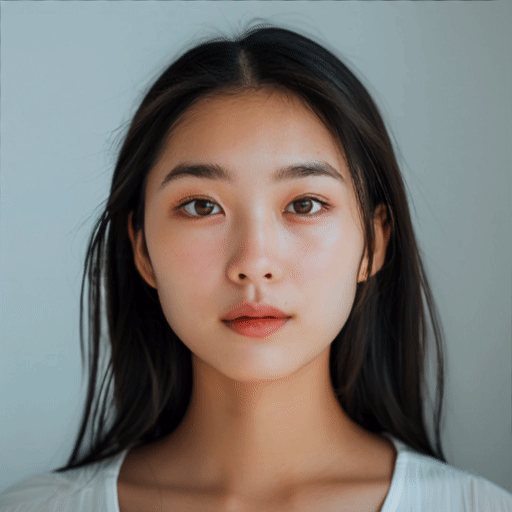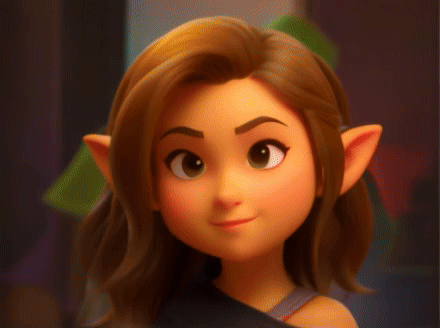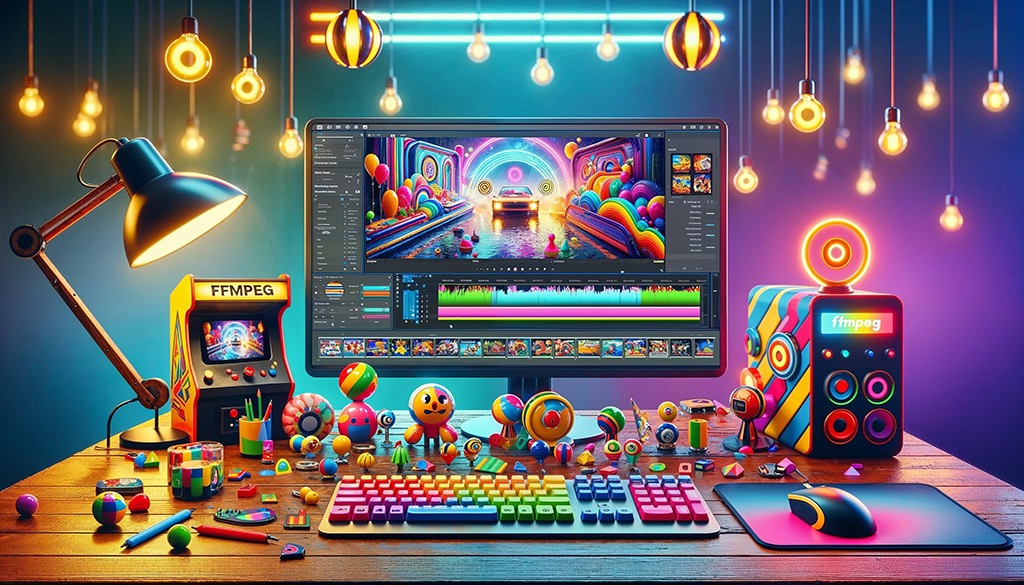live-portrait
Maintainer: fofr

60

| Property | Value |
|---|---|
| Run this model | Run on Replicate |
| API spec | View on Replicate |
| Github link | View on Github |
| Paper link | View on Arxiv |
Create account to get full access
Model overview
The live-portrait model is an efficient portrait animation system that uses a driving video source to animate a portrait. It is developed by the Replicate creator fofr, who has created similar models like video-morpher, frames-to-video, and toolkit. The live-portrait model is based on the research paper "LivePortrait: Efficient Portrait Animation with Stitching and Retargeting Control" and shares some similarities with other portrait animation models like aniportrait-vid2vid and livespeechportraits.
Model inputs and outputs
The live-portrait model takes a face image and a driving video as inputs, and generates an animated portrait that follows the movements and expressions of the driving video. The model also allows for various configuration parameters to control the output, such as the size, scaling, positioning, and retargeting of the animated portrait.
Inputs
- Face Image: An image containing the face to be animated
- Driving Video: A video that will drive the animation of the portrait
- Live Portrait Dsize: The size of the output image
- Live Portrait Scale: The scaling factor for the face
- Video Frame Load Cap: The maximum number of frames to load from the driving video
- Live Portrait Lip Zero: Whether to enable lip zero
- Live Portrait Relative: Whether to use relative positioning
- Live Portrait Vx Ratio: The horizontal shift ratio
- Live Portrait Vy Ratio: The vertical shift ratio
- Live Portrait Stitching: Whether to enable stitching
- Video Select Every N Frames: The frequency of frames to select from the driving video
- Live Portrait Eye Retargeting: Whether to enable eye retargeting
- Live Portrait Lip Retargeting: Whether to enable lip retargeting
- Live Portrait Lip Retargeting Multiplier: The multiplier for lip retargeting
- Live Portrait Eyes Retargeting Multiplier: The multiplier for eye retargeting
Outputs
- An array of URIs representing the animated portrait frames
Capabilities
The live-portrait model can efficiently animate a portrait by using a driving video source. It supports various configuration options to control the output, such as the size, scaling, positioning, and retargeting of the animated portrait. The model can be useful for creating various types of animated content, such as video messages, social media posts, or even virtual characters.
What can I use it for?
The live-portrait model can be used to create engaging and personalized animated content. For example, you could use it to create custom video messages for your customers or clients, or to animate virtual characters for use in games, movies, or other interactive media. The model's ability to control the positioning and retargeting of the animated portrait could also make it useful for creating animated content for educational or training purposes, where the focus on the speaker's face is important.
Things to try
One interesting thing to try with the live-portrait model is to experiment with the various configuration options, such as the retargeting parameters, to see how they affect the output. You could also try using different types of driving videos, such as video of yourself speaking, to see how the model handles different types of facial movements and expressions. Additionally, you could try combining the live-portrait model with other AI models, such as speech-to-text or text-to-speech, to create more complex animated content.
This summary was produced with help from an AI and may contain inaccuracies - check out the links to read the original source documents!
Related Models

live-portrait

5
The live-portrait model is a unique AI tool that can create dynamic, audio-driven portrait animations. It combines an input image and video to produce a captivating animated portrait that reacts to the accompanying audio. This model builds upon similar portrait animation models like live-portrait-fofr, livespeechportraits-yuanxunlu, and aniportrait-audio2vid-cjwbw, each with its own distinct capabilities. Model inputs and outputs The live-portrait model takes two inputs: an image and a video. The image serves as the base for the animated portrait, while the video provides the audio that drives the facial movements and expressions. The output is an array of image URIs representing the animated portrait sequence. Inputs Image**: An input image that forms the base of the animated portrait Video**: An input video that provides the audio to drive the facial animations Outputs An array of image URIs representing the animated portrait sequence Capabilities The live-portrait model can create compelling, real-time animations that seamlessly blend a static portrait with dynamic facial expressions and movements. This can be particularly useful for creating lively, engaging content for video, presentations, or other multimedia applications. What can I use it for? The live-portrait model could be used to bring portraits to life, adding a new level of dynamism and engagement to a variety of projects. For example, you could use it to create animated avatars for virtual events, generate personalized video messages, or add animated elements to presentations and videos. The model's ability to sync facial movements to audio also makes it a valuable tool for creating more expressive and lifelike digital characters. Things to try One interesting aspect of the live-portrait model is its potential to capture the nuances of human expression and movement. By experimenting with different input images and audio sources, you can explore how the model responds to various emotional tones, speech patterns, and physical gestures. This could lead to the creation of unique and captivating animated portraits that convey a wide range of human experiences.
Updated Invalid Date

video-morpher

10
The video-morpher model is a powerful AI tool that can generate videos by morphing between four different subject images. This model is built upon the excellent ComfyUI workflow by ipiv, which explores the use of AnimateDiff and Latent Consistency Models (LCMs) for video generation. The video-morpher model allows you to apply an optional style to the entire video, giving you the ability to create unique and visually striking content. The video-morpher model is similar to other models created by the maintainer, fofr, such as frames-to-video, video-to-frames, lcm-video2video, face-to-many, and style-transfer. These models explore various aspects of video and image manipulation, providing users with a diverse set of tools to work with. Model inputs and outputs The video-morpher model takes a variety of inputs, allowing you to customize the generated video. These inputs include the mode (small, medium, upscaled, or upscaled-and-interpolated), a seed for reproducibility, a prompt, a checkpoint, a style image, the aspect ratio of the video, and the strength of the style application. You can also choose to use Controlnet for geometric guidance and provide up to four subject images to morph between. Inputs Mode**: Determines the quality and duration of the generated video, ranging from a quick experimental video to a high-quality, upscaled, and interpolated version. Seed**: Sets a seed for reproducibility, allowing you to generate the same video multiple times. Prompt**: A short text prompt that has a small effect on the generated video, with the subject images being the primary driver of the content. Checkpoint**: The AI model checkpoint to use for the video generation. Style Image**: An optional image that will be used to apply a specific style to the entire video. Aspect Ratio**: The aspect ratio of the output video. Style Strength**: The strength of the style application, ranging from 0 (no style) to 2 (maximum style). Use Controlnet**: A boolean flag to enable the use of Controlnet for geometric guidance during the video generation. Negative Prompt**: Text describing what you do not want to see in the generated video. Subject Images 1-4**: The four subject images that will be morphed together to create the video. Outputs The generated video file. Capabilities The video-morpher model is capable of generating unique and visually striking videos by morphing between four different subject images. You can apply a specific style to the entire video, allowing you to create content with a distinct aesthetic. The model's ability to generate videos at different quality levels and durations, from quick experiments to high-quality, upscaled, and interpolated versions, makes it a versatile tool for a wide range of applications. What can I use it for? The video-morpher model can be used for a variety of creative and experimental projects. You could use it to create abstract or surreal video art, generate unique content for social media, or even explore the possibilities of video generation for commercial applications. The ability to apply a specific style to the video could be particularly useful for branding or marketing purposes, allowing you to create cohesive and visually consistent content. Things to try One interesting thing to try with the video-morpher model is to experiment with different subject images and style choices. You could try morphing between images of people, animals, or abstract shapes, and see how the resulting videos vary in terms of content and aesthetic. Additionally, you could explore the use of Controlnet for geometric guidance, and observe how this affects the final output. Another idea is to try generating videos with different aspect ratios, such as square or wide-screen formats, to see how this impacts the visual composition and storytelling. You could also play with the style strength parameter to create videos with varying degrees of stylization, from subtle to highly abstract. Overall, the video-morpher model provides a versatile and powerful tool for video generation, allowing you to explore the creative possibilities of AI-driven content creation.
Updated Invalid Date

frames-to-video

1
The frames-to-video model is a tool developed by fofr that allows you to convert a set of frames into a video. This model is part of a larger toolkit created by fofr that includes other video-related models such as video-to-frames, toolkit, lcm-video2video, audio-to-waveform, and lcm-animation. Model inputs and outputs The frames-to-video model takes in a set of frames, either as a ZIP file or as a list of URLs, and combines them into a video. The user can also specify the frames per second (FPS) of the output video. Inputs Frames Zip**: A ZIP file containing the frames to be combined into a video Frames Urls**: A list of URLs, one per line, pointing to the frames to be combined into a video Fps**: The number of frames per second for the output video (default is 24) Outputs Output**: A URI pointing to the generated video Capabilities The frames-to-video model is a versatile tool that can be used to create videos from a set of individual frames. This can be useful for tasks such as creating animated GIFs, generating time-lapse videos, or processing video data in a more modular way. What can I use it for? The frames-to-video model can be used in a variety of applications, such as: Creating animated GIFs or short videos from a series of images Generating time-lapse videos from a sequence of photos Processing video data in a more flexible and modular way, by first breaking it down into individual frames Companies could potentially monetize this model by offering video creation and processing services to their customers, or by integrating it into their own video-based products and services. Things to try One interesting thing to try with the frames-to-video model is to experiment with different frame rates. By adjusting the FPS parameter, you can create videos with different pacing and visual effects, from slow-motion to high-speed. You could also try combining the frames-to-video model with other video-related models in the toolkit, such as video-to-frames or toolkit, to create more complex video processing pipelines.
Updated Invalid Date

toolkit

3
The toolkit model is a versatile video processing tool created by Replicate developer fofr. It can perform a variety of common video tasks, such as converting videos to MP4 format, creating GIFs from videos, extracting audio from videos, and converting a folder of frames into a video or GIF. This model is a helpful CPU-based tool that wraps common FFmpeg tasks, making it easy to perform common video manipulations. It can be particularly useful for tasks like creating web content, making video assets for social media, or preparing video files for further editing. The toolkit model complements other video-focused models created by fofr, like the sticker-maker, face-to-many, and become-image models. Model inputs and outputs The toolkit model accepts a variety of input files, including videos, GIFs, and zipped folders of frames. Users can specify the desired task, such as converting to MP4, creating a GIF, or extracting audio. They can also adjust the frames per second (FPS) of the output, with the default setting keeping the original FPS or using 12 FPS for GIFs. Inputs Task**: The specific operation to perform, such as converting to MP4, creating a GIF, or extracting audio Input File**: The video, GIF, or zipped folder of frames to be processed FPS**: The frames per second for the output (0 keeps the original FPS, or defaults to 12 FPS for GIFs) Outputs The processed video or audio file, returned as a URI Capabilities The toolkit model can handle a wide range of common video tasks, making it a versatile tool for content creators and video editors. It can convert videos to MP4 format, create GIFs from videos, extract audio from videos, and even convert a zipped folder of frames into a video or GIF. This allows users to quickly and easily prepare video assets for a variety of purposes, from social media content to video editing projects. What can I use it for? The toolkit model is well-suited for a variety of video-related tasks. Content creators can use it to convert video files for easy sharing on social media platforms or websites. Video editors can leverage it to extract audio from footage or convert a series of images into a video or GIF. Businesses may find it useful for preparing video assets for marketing campaigns or client presentations. The model's ability to handle common video manipulations in a straightforward manner makes it a valuable tool for a wide range of video-centric workflows. Things to try One interesting use case for the toolkit model is processing a zipped folder of frames into a video or GIF. This could be useful for animators or designers who need to create short animated sequences from a series of individual images. The model's flexibility in handling different input formats and output specifications makes it a versatile tool for a variety of video-related projects.
Updated Invalid Date